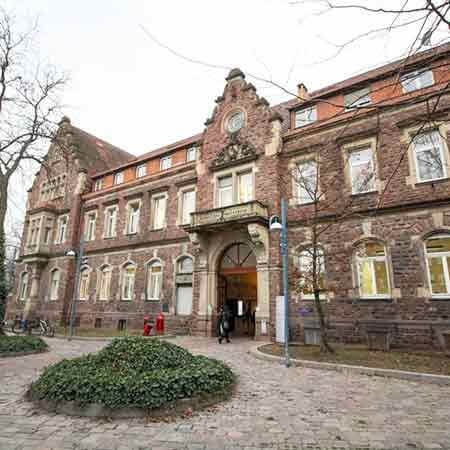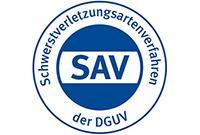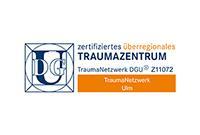About the disease
The first thing you need to know about this disease is that Erb's palsy is a paralysis of arm due to trophic disorders of arm nerve endings. In most cases this type of palsy is caused by abnormally difficult childbirth. It means that during the birth a child damaged one of his arms, which resulted in its partial paralysis.
Children with Erb`s palsy can lose arm motion for several months. Disease is characterized by impaired mobility of an arm, supination and problems with shoulder lifting. Erb`s palsy is also known as Erb Duchenne palsy as it was named after two physicians who first researched and scientifically described this disease. It is not a very rare illness with 1-2 cases per thousand births. It had been researched during last decade but despite all this Erb's palsy still presents a medical problem in neurology, orthopedics, pediatrics and gynecology.
As it was mentioned above, Erb's palsy is a traumatic injury of upper arm. Injury may originate either in arm or in shoulder. Most often Erb`s palsy occurs during difficult child labor. It can be caused if head of baby was pulled roughly when baby was moving through birth canal. In adults it can be caused by severe injury to the shoulder.
Overall, causes of palsy are:
- Acquired trauma
- Difficult childbirth
- Smoking and alcohol consumption during pregnancy
Symptoms
There are 3 stages of this disease. Acute paralysis stage develops right after the birth or an injury and lasts approximately 1 month. Acute paralysis unables elbow flexion. Also a person can not move arms, shoulders or rotate torso. There are reduced reflex biceps as newborns are not able to grasp things. Main symptoms are:
- Hypertension of affected arm
- Cold, pale skin
- Sensory disorders
- Reduced pain sensitivity
- Restrained motion capacity
Acute stage usually follows by posttraumatic period which indicates recovery. Range of recovery depends on type of injury, efficacy of treatment and timely diagnosis. If a person suffered from mild Erb`s palsy, gradual increase in arm motion is possible. He can even restore full sensitivity of arm. Despite this, there can be noticeable shortening of arm. Asymmetry of the shoulder can cause curvature of the spine and result in scoliosis.
Diagnosis
Typically affected arm is rotated inward and this is the first indicator of Erb`s palsy. If there were complications during childbirth doctor can diagnose a child right after the birth. In adults, Erb's palsy develops gradually and is usually diagnosed by neurologist and an orthopedist. X-ray of the shoulder joint allows to see deviations in the form of person`s bone structure. Radiology can also detect increase in the distance from glenoid cavity to the proximal metaphyseal shoulder, which is also an indicator of Erb's palsy. If person injured his arm, fist signs preceding Erb's palsy are atrophy and osteoporosis of affected arm. These two symptoms help doctors conduct a more precise diagnosis.
Doctor can also use such diagnostic methods:
- Ultrasound of the shoulder joint
- Computer myelography
- Electromyography
- Electroneurogram
- MRI of the spine
Evaluation of the pulse of arm nerve endings allows to determine nature of the damage and range of arm`s immobility. Indication for surgical treatment is based mainly on myelography, which gives a very detailed information about Erb's palsy and helps predict approximate time and range of recovery. MRI is less informative because it can not detect the root of avulsion.
Treatment
- According to Brainandspinalcord.org, Erb's palsy may be prevented during the birth by improved delivery techniques. Nevertheless, if your child does have palsy, he needs to undergo a wide specter of treatment courses to fully recover and restore function of his arm.
- Transplantation of nerve is an effective and complex procedure when nerve graph of a donor is transplanted into affected area, where nerve endings are immobile.
- After this procedure patients are recommended to undergo neurorehabilitation, which can expedite recovery from damage of nervous system. In case of Erbs`s palsy neurorehabilitation can help an arm to recover faster.
- At the same time patients who are undergoing neurorehabilitation are recommended to undergo the course of massage, physiotherapy and reflexology. Courses of massage need to be continued again and again to have considerable effect. They also need to be performed by a classified masseuse, which can innervate nerve endings and increase arm mobility. Physiotherapy also aims to increase range of arm motion so that a person will not have problems in his everyday life. Exercises need to be done daily for at least 20 minutes. Even after Erb's palsy recovery a patient needs to keep exercising so that he will not have immobility of the affected limb.
- Pharmacotherapy may include anti-inflammatory and analgesic drugs. Such drugs improve blood circulation of tissues of the brachial plexus. They need to be strictly dosed not to bring harm and taken only by doctor's prescription. Other agents that increase metabolism of nervous tissue can also be used as Erb's palsy treatment.
- Surgical treatment can also be used if arm does not recover after course of nerve transplantation and neurorehabilitation. Surgery of Erb`s palsy usually means separation of spinal cord from brachial plexus nerve endings. In that case surgery needs to be done during first year of life. Best results from such surgery are obtained if it was performed before the age of 6-7 months. Therefore, if within 3 months conservative therapy did not bring significant success, surgery is necessary to stop the process of atrophy and to innervate nerve endings.
- During surgery it is impossible to restore completely bone structure of arm, so that it will look the same as another arm. In order to create a more appealing structure of arm, doctors can perform orthopedic reconstructive plastic surgery so that a patient will not have appearance problems in his future. Nevertheless, one arm can be slightly higher than another after such surgery.
Authors: Dr. Nadezhda Ivanisova, Dr. Sergey Pashchenko











